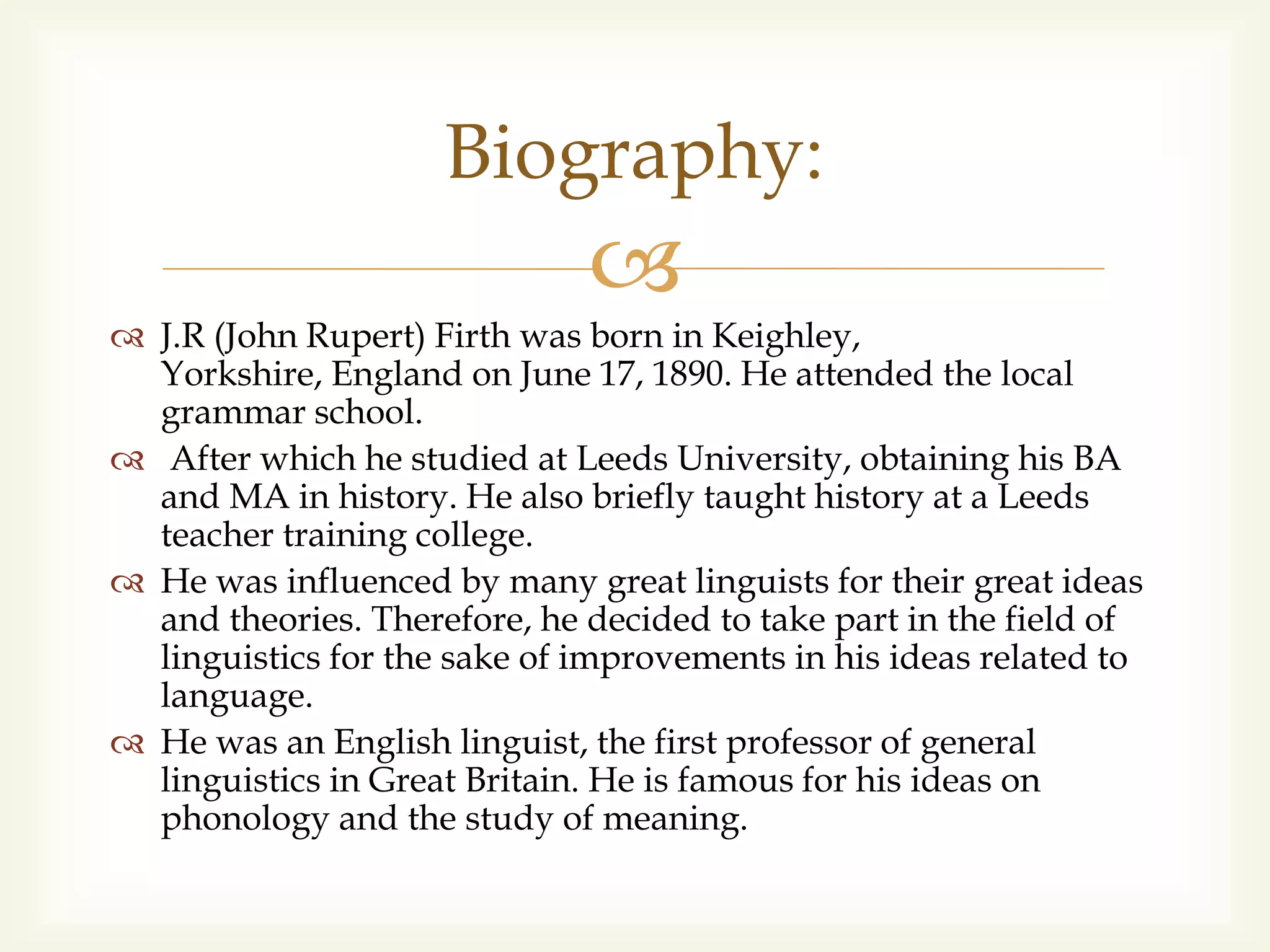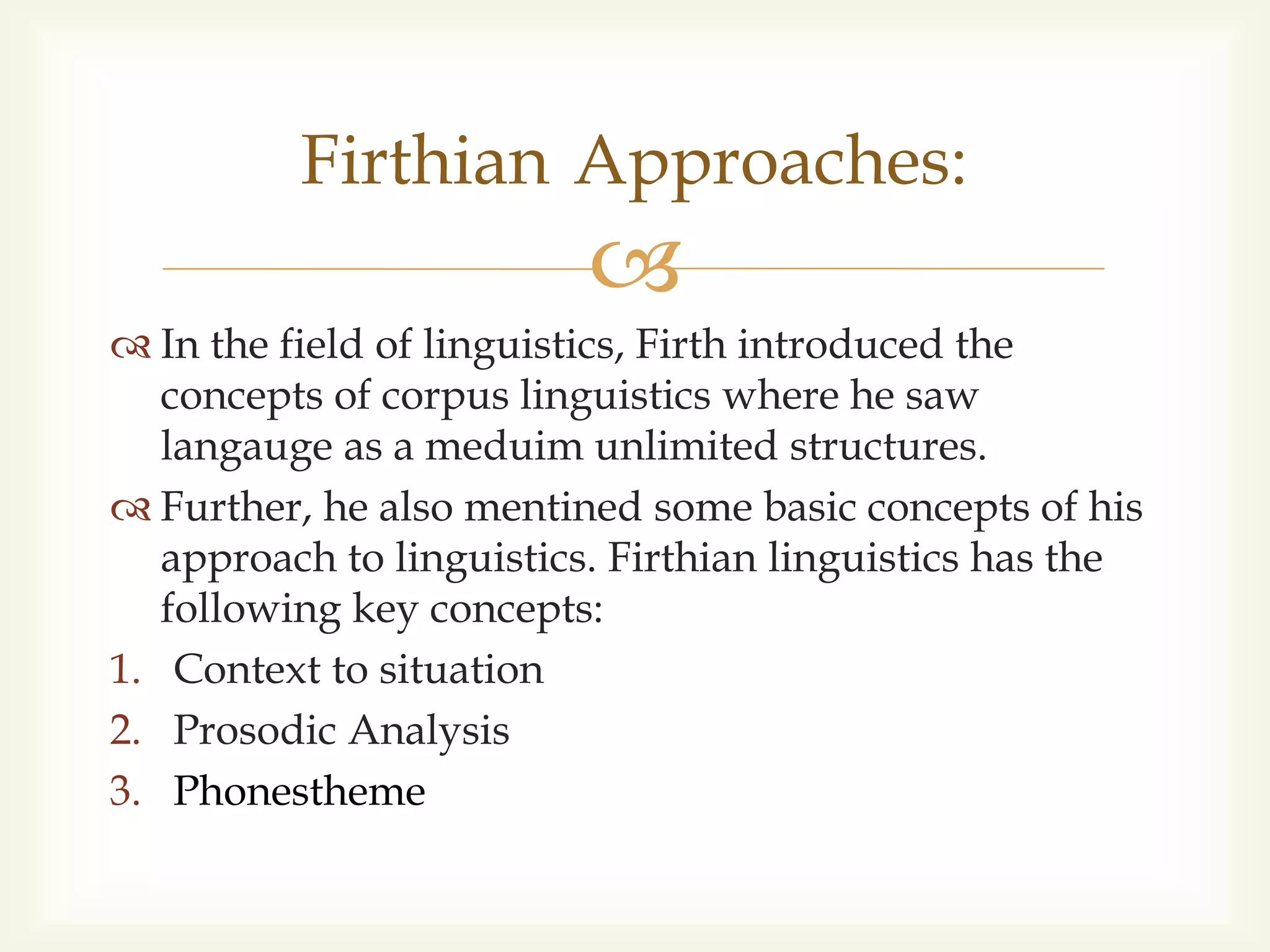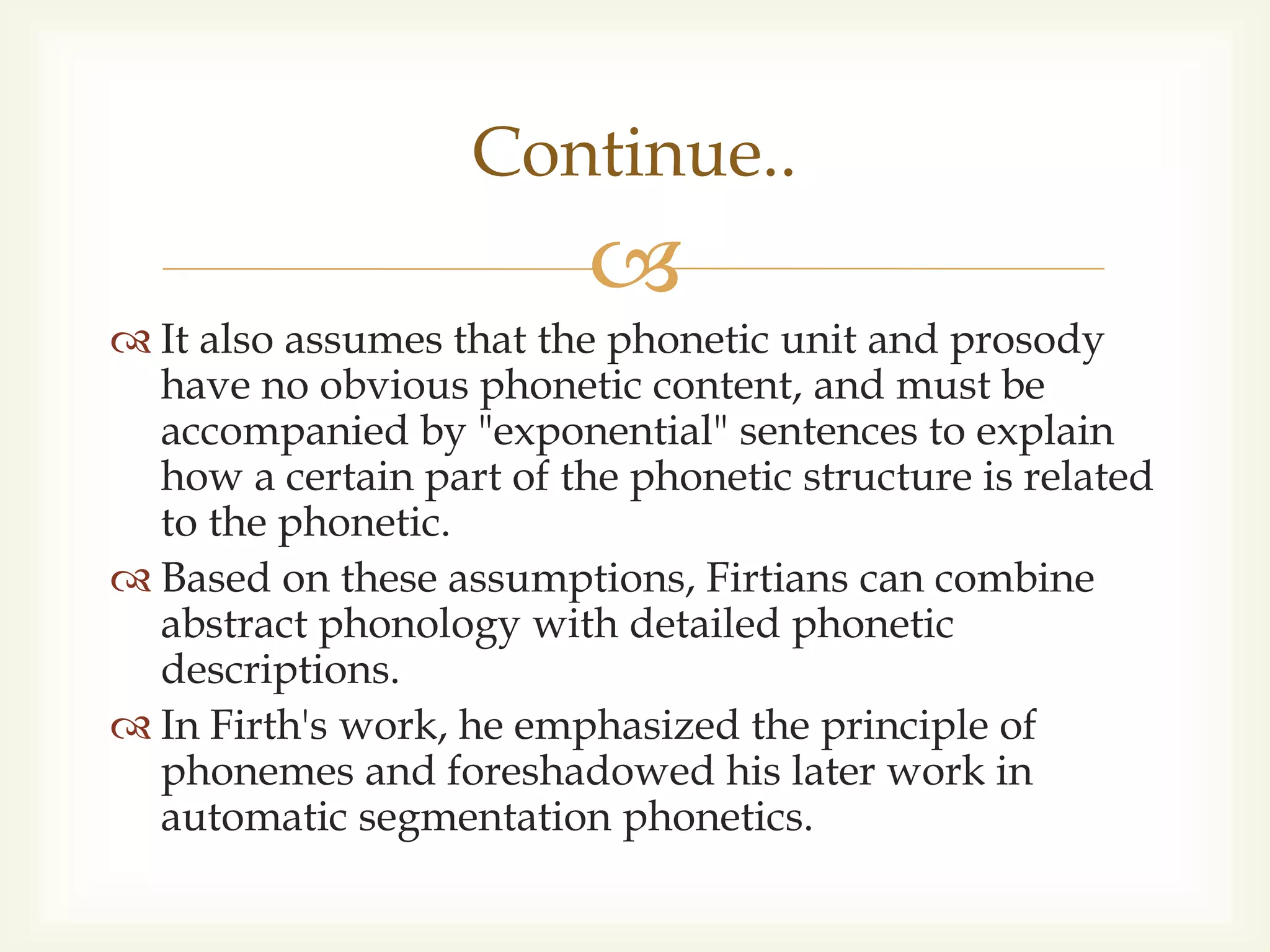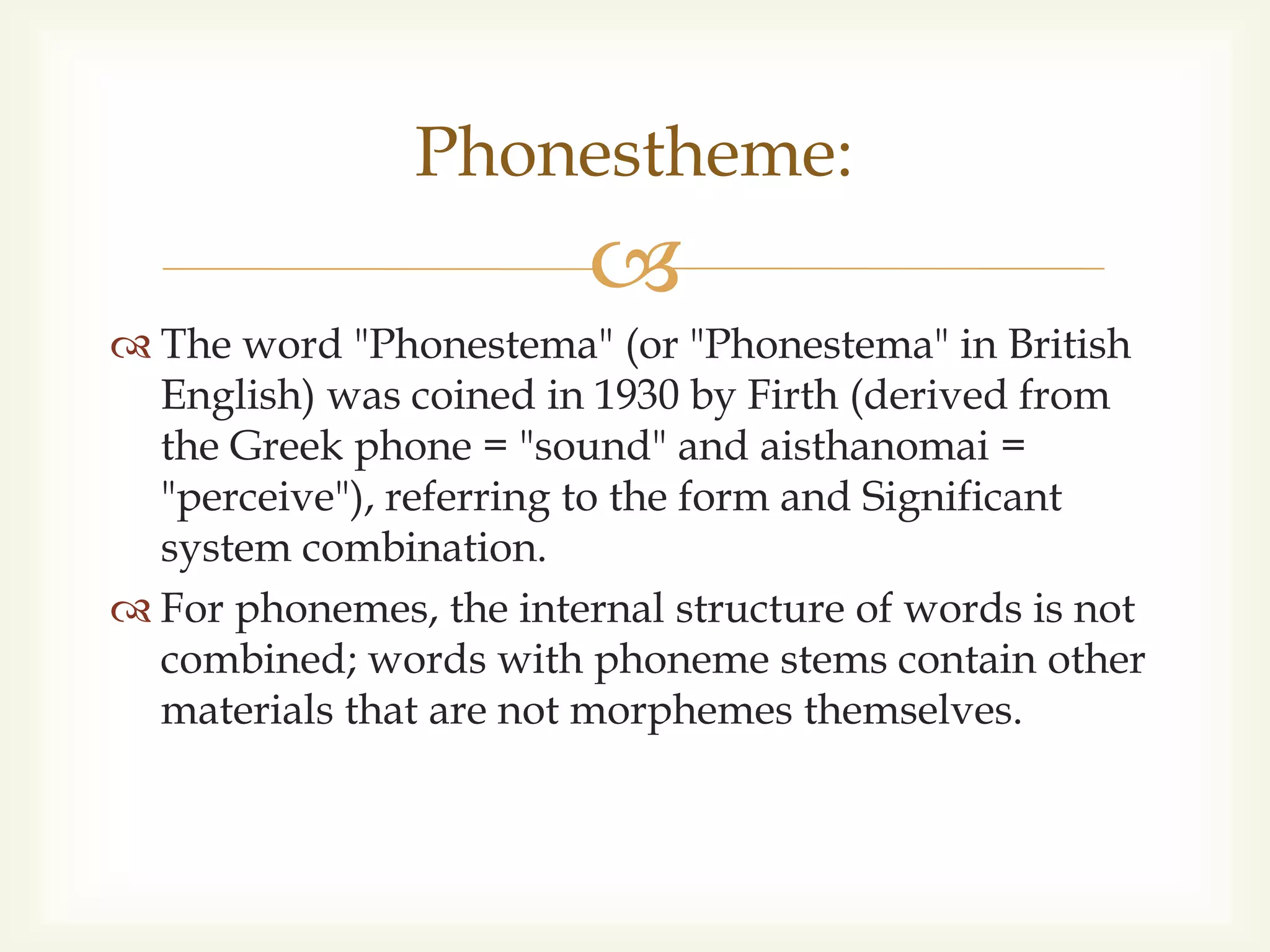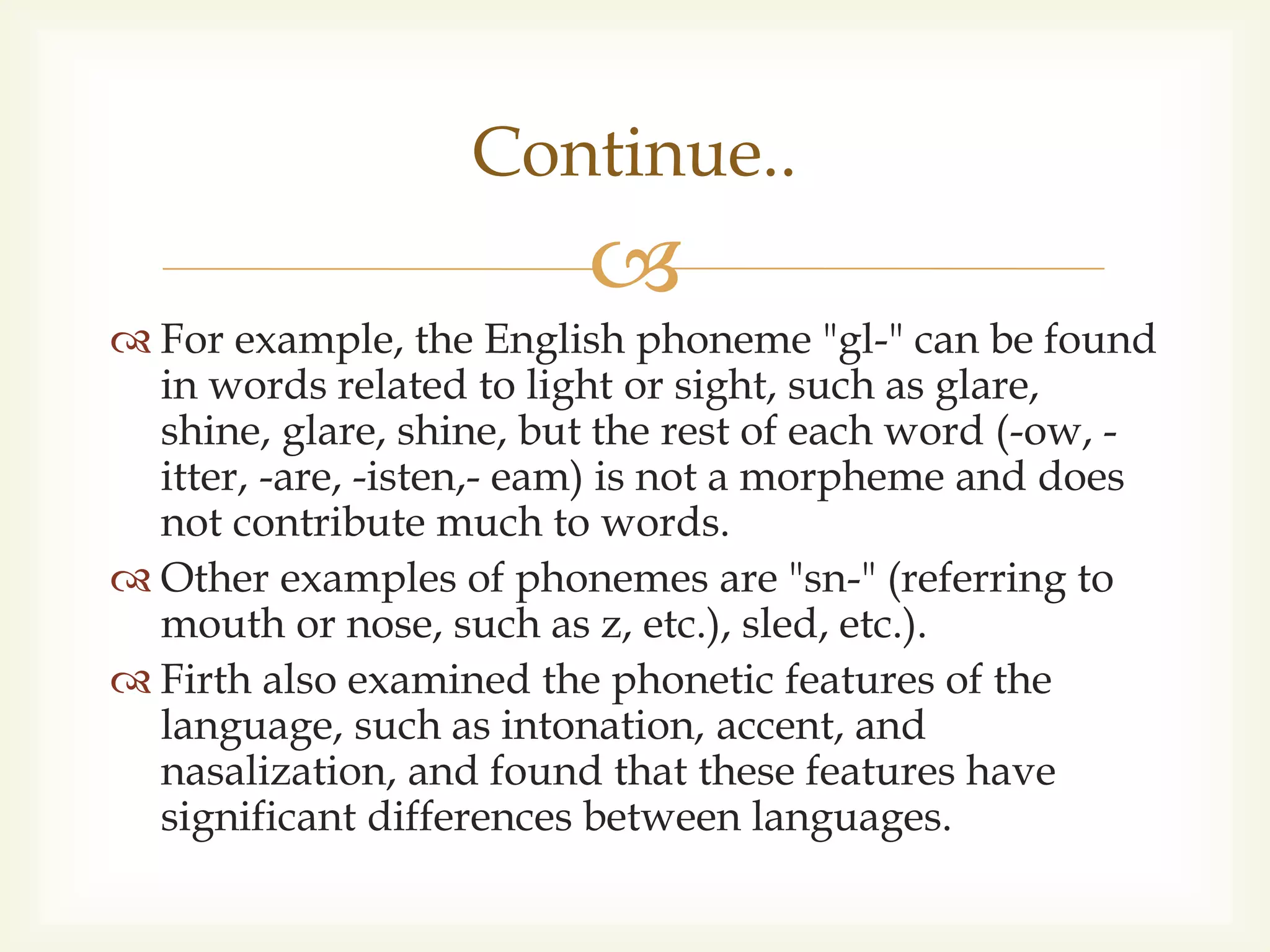J.R. Firth was a pioneering English linguist known for his contributions to understanding language as a complex, context-dependent process rather than an automatic one. He introduced key concepts such as context to situation, prosodic analysis, and phonestheme, influencing the field of linguistics and promoting it as an independent science. Firth's ideas emphasized the importance of personal and social factors in language use, as well as the inherent uniqueness of individual speech.

